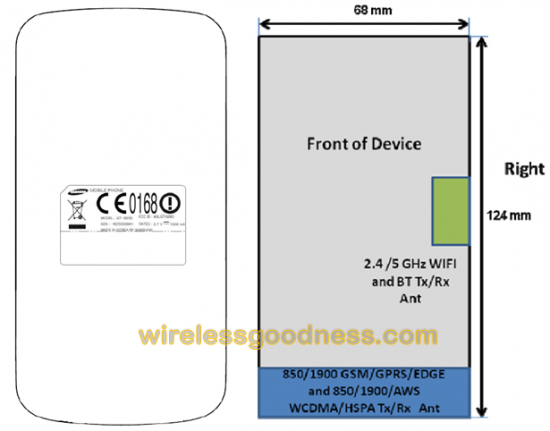
The Nexus Prime in the form of GT-i9250 has just made its way through the FCC over in the US of A. Although it won’t be unveiled as soon as we would have liked, this FCC filing does give us some interesting information. The device will support dual-band Wi-Fi on both 2.4GHz and 5GHz frequencies. This variant also supports tri-band frequencies for the US in the form of 850/1700/1900MHz — no LTE in sight.
Before everyone gets all up in arms about there being no 900/2100MHz support, there are a few ways this could happen:
- The radio chip could be penta-band and support 850/900/1700/1900/2100MHz and the FCC only covers the ones used in America.
- Another version will be made for Europe/Asia that will support 850/900/2100MHz
- The Nexus Prime will never leave the States and we should all start panic buying Nexus S’
If there’s a manufacturer that can quickly spit out multiple versions of devices, it’s Samsung, so that second option doesn’t seem too far-fetched. The first version would make sense, but could consume more battery unless the tell the radio via software not to operate on certain frequencies.
The shape of the Nexus Prime also fits perfectly with the leaked video that appeared yesterday. Nice. Now all we need is for Google and Samsung to announce a new launch date and we’ll be good to go.




I noticed over on Engadget in the comments, that according to some people, the FCC only looks at bands on which the phone transmits, but not receives, hence why it doesn’t look at 2100mhz as it only receives on that band. So its either got a quad band chip supporting at least: 850/1900/AWS (1700)/2100 or it will have the pentaband and cover 900 as well (which would be perfect for us still on Vodafone….)
I was hoping for Telstra LTE 1800MHz support, but I think that was wishful thinking 🙁
We also get our first confirmation of physical size – 1mm longer than the SGS II and 3mm wider.
Any current SGS II owners think that may be too wide for people with smaller hands?
I think that’d be fine.
The Samsung Galaxy S2 (GT-I9100 model no.) went through the FCC with just the 850 and 1900 Mhz GSM/EDGEWCDMA/HSPA bands being tested. As such it would appear your first hypothesis could be correct since we all know the GT-9100 supports the 850/900/1900/2100 Mhz bands.